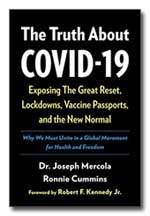 Seizures (also called “fits” or convulsions) are episodes of disturbed brain function that cause changes in attention or behavior. They are caused by abnormally excited electrical signals in the brain. There are a number of different types of seizures, including
Seizures (also called “fits” or convulsions) are episodes of disturbed brain function that cause changes in attention or behavior. They are caused by abnormally excited electrical signals in the brain. There are a number of different types of seizures, including
- Absence (petit mal) seizure
- Generalized tonic-clonic (grand mal) seizure
- Partial (focal) seizure
Epilepsy is a brain disorder involving repeated, spontaneous seizures of any type.
The severity of symptoms can vary greatly, from simple staring spells to loss of consciousness and violent convulsions.
For most people with epilepsy, each seizure is similar to previous ones. The type of seizure a person has depends on a variety of things, such as the part of the brain affected and the underlying cause of the seizure. An aura consisting of a strange sensation (such as tingling, smelling an odor that isn’t actually there, or emotional changes) occurs in some people before each seizure.
Sometimes a seizure is related to a temporary condition, such as exposure to drugs, withdrawal from certain drugs, a high fever, or abnormal levels of sodium or glucose in the blood. If the seizure or seizures do not happen again once the underlying problem is corrected, the person does NOT have epilepsy.
In other cases, permanent injury to or changes in brain tissue cause the brain to be abnormally excitable. In these cases, the seizures happen without an immediate cause. This is epilepsy. Epilepsy can affect people of any age.
The Diet Connection
Chen in 1980 caused seizures in seizure-resistant mice by first exposing them to salicylate and then 6 hours later to a loud noise.
A number of studies by Egger in the 1980s and 1990s have shown that many symptoms including “fits” improved or resolved on an oligoantigenic (few foods) diet similar to the Feingold diet – but apparently only if there are other symptoms as well, such as ADHD or headaches. Cysneiros et al published a review in 2009 suggesting that increased omega 3 (as in fish oil) could help prevent sudden death from epilepsy, as well as improving the condition itself.
The Ketogenic diet has been used for many years to control seizures that would not respond to the usual medications. This is not a do-it-yourself diet like the Feingold diet, but must be implemented with careful medical supervision. You can get more information about it at the Charlie Foundation. Meryl Streep also starred in an excellent film on the subject called “First Do No Harm” which is available at the Charlie Foundation website.
Some of the Older Studies:
- Egger 1989: Oligoantigenic diet treatment of children with epilepsy and migraine
- Egger 1985: Controlled Trial of Oligoantigenic Treatment in the Hyperkinetic Syndrome
- Egger 1983: Is migraine food allergy? A double-blind controlled trial of oligoantigenic diet treatment
- Chen 1980: Potentiation of noise-induced audiogenic seizure risk by salicylate in miceas a function of salicylate-noise exposure interval [Full Text || Get Password]
- Chen 1980: Potentiation of acoustic-trauma-induced audiogenic seizure susceptibility by salicylates in mice. [Full Text || Get Password]
- Lee 1957: Effect of dietary factors on incidence of spontaneous and induced convulsions in C3H male mice. [Full Text || Get Password]
- Coursin 1954: Convulsive seizures in infants with pyridoxine-deficient diet.
- Bevan 1951: Sound-induced seizures in rats fed an amino-acid deficient diet.
- Griffiths 1950: Self-selection of diet in relation to audiogenic seizures in rats.




















